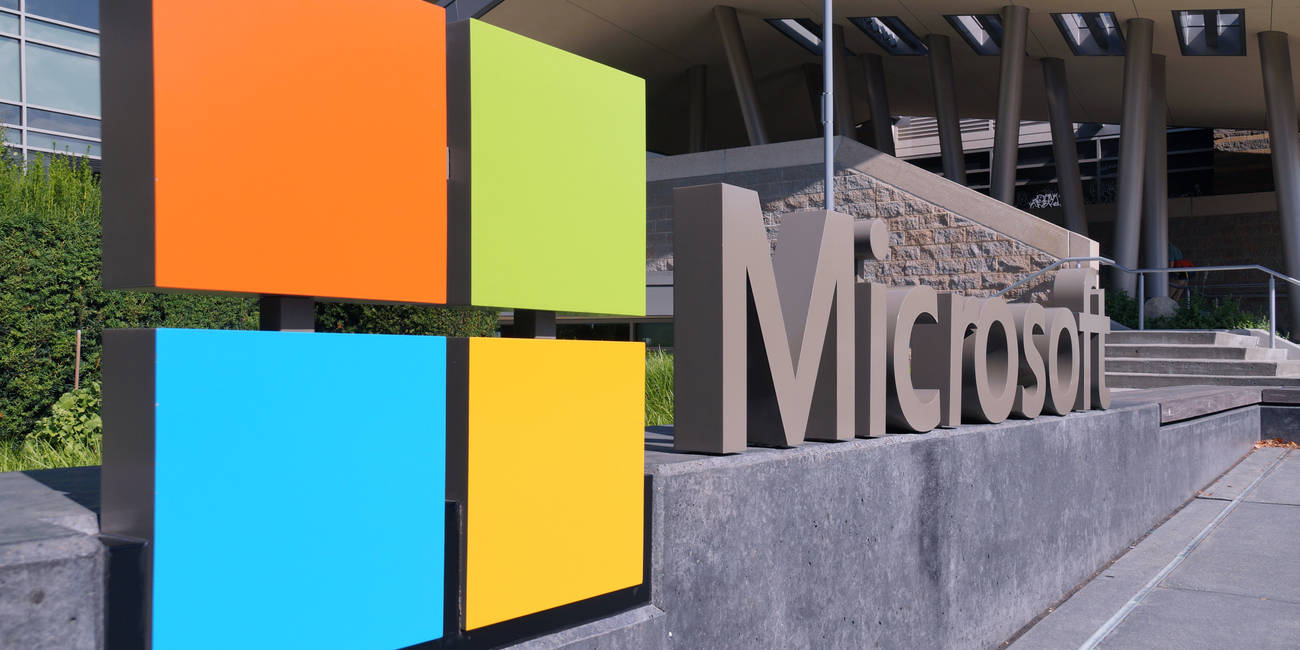Microsofts Dublin DC Power Plant Gets The, Er, Green Light

Updated Unable to secure a steady supply of power from Ireland's national power grid, Microsoft has elected to build its own power plant to keep its €900 million datacenter development outside Dublin up and running.
It's no secret that datacenters use a lot of power - so much so that in some certain markets, of which Dublin is one, normal utilities may not be able to keep up during periods of peak consumption. In these circumstances datacenter operators may lean on small-scale diesel or battery supplies to make up the difference.
However, Microsoft has decided to go another route. Earlier this month, the software giant received approval to power its facilities using its own private gas-powered power plant located alongside its datacenters in Dublin's Grange Castle Business Park, according to Irish newspaper Business Post.
The power plant will reportedly be capable of generating 170 megawatts of power from 22 generators at a cost of roughly €100 million to build. The station will operate during periods in which the national grid is unable to supply enough power to support Microsoft's datacenters. The paper reports that the facility, which is nearly complete, is expected to operate for eight hours a day, 365 days a year.
While Redmond is working with industry biz Eaton to supply energy back to the grid to smooth out fluctuations in the power supply, the Windows giant won't be exporting excess power from its gas plant. "The gas engines and generators will be used solely for the purpose of generating power for the installation," Ireland's Environmental Protection Agency is quoted as saying.
And in the event the gas plant fails, Microsoft has also received permission to run more than 150 diesel generators at the site. So, if Microsoft's bit barns can't burn gas they'll revert to oil instead.
- Power grid worries force Amazon to run Oregon datacenters using fuel cells
- Microsoft wants to export 'grid-interactive' Dublin datacenter setup
- Why do cloud titans keep building datacenters in America's hottest city?
- Microsoft's big bet on helium-3 fusion explained
Microsoft's ongoing reliance on fossil fuels for its datacenters reminds us of its earlier sustainability pledge, in which it vowed to be "100 percent" powered by renewable energy sources by 2025, and to be "carbon negative" by 2030.
We've reached out to the folks at Redmond for more information into how exactly a natural gas power plant fits into those goals, but had not heard back at the time of publication. If we had to guess, Microsoft will have to resort to some kind of spreadsheet sustainability tactic, such as purchasing renewable energy credits in another location as an offset for the emissions generated by the Dublin plant.
To be clear, Microsoft isn't the only cloud provider that's resorted to supplying its own power. Back in February, we learned that Amazon Web Services planned to transition some of its datacenters to natural gas fuel cells.
The plan calls for a 75-megawatt fuel cell installation, which will power three datacenters, with the potential to expand that to another four sites in the future.
Unlike natural gas generators, fuel cells generate electricity without combustion. However, both generate carbon dioxide as a by-product unless clean fuels, such as hydrogen, are employed.
This potentially makes Amazon's choice of generators a more sustainable option than Microsoft's, as the fuel cells can be converted to run on a 50/50 mix of hydrogen and natural gas or upgraded to run entirely on green hydrogen. ®
Updated to add on July 25
"The gas power plant at our Dublin datacenter campus will only be used for back up purposes, and only when we are required to transfer to alternative sources of power when the electricity grid is constrained or experiences an outage," a Microsoft spokesperson told The Register.
From Chip War To Cloud War: The Next Frontier In Global Tech Competition
The global chip war, characterized by intense competition among nations and corporations for supremacy in semiconductor ... Read more
The High Stakes Of Tech Regulation: Security Risks And Market Dynamics
The influence of tech giants in the global economy continues to grow, raising crucial questions about how to balance sec... Read more
The Tyranny Of Instagram Interiors: Why It's Time To Break Free From Algorithm-Driven Aesthetics
Instagram has become a dominant force in shaping interior design trends, offering a seemingly endless stream of inspirat... Read more
The Data Crunch In AI: Strategies For Sustainability
Exploring solutions to the imminent exhaustion of internet data for AI training.As the artificial intelligence (AI) indu... Read more
Google Abandons Four-Year Effort To Remove Cookies From Chrome Browser
After four years of dedicated effort, Google has decided to abandon its plan to remove third-party cookies from its Chro... Read more
LinkedIn Embraces AI And Gamification To Drive User Engagement And Revenue
In an effort to tackle slowing revenue growth and enhance user engagement, LinkedIn is turning to artificial intelligenc... Read more

